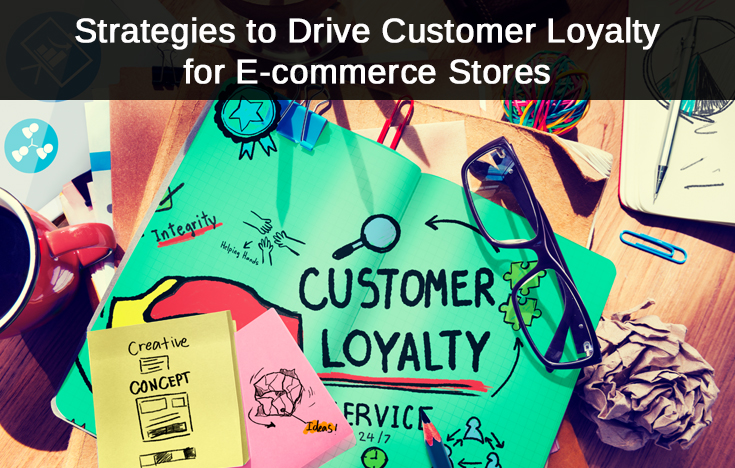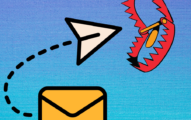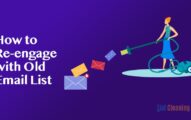
Post-purchase emails are another element of an e-commerce strategy that should not be ignored. Naturally, it’s possible that you can ignore them if you only focus on new customers and don’t require your existing customers to place another purchase.
However, for the majority of e-commerce companies, customer loyalty is essential to maintaining a steady stream of income. One effective and cost-efficient method to encourage repeat orders from existing customers is ongoing post-purchase interaction.
What is a Post-Purchase Email?
Post-purchase emails are a part of marketing via e-commerce. These are follow-ups that are sent out after the buyer has received their purchase (so they’re not transactional emails).
They are designed to keep people interested in the brand with new content and deals. The most important thing is that once the client purchases an item from your store, you’ll have the data. You can make use of their buying habits, their interest in the product, as well as other factors. To customize your emails to help them be more relevant.
This is a completely different way of doing it than simply sending a single massive email to every contact who is on your list of email contacts.
A majority of the top customer retention strategies are based on specific and personalized email messages after purchase. The rate of open isn’t as high as the rate of confirmation emails for orders. However, value can be added to build a positive relationship with your customer.
If they’re only marketing and pushy, they’ll quit opening your doors, and you’ll lose regular customers.
Examples of Post-Purchase Email Campaigns
You can create various post-purchase marketing campaigns based on the product, customer’s life cycle, and buying behavior. Here are 12 options for you to consider:
Let’s look at each kind of email that drives retention.
- A proposal to combat the abandonment of your browsing
You can stop browsing abandonment. This happens when people visit your website but don’t purchase something. Contact them by email, and offer them the incentive to follow through with the purchase.
The great thing about such a win-back message is that product(s) will be included in the message so that the client can easily remember it.
Furthermore, since it’s still an after-purchase message and a dependable CRM system, you will have the behavior tracking of customers at all times during their visits.
To filter out those who aren’t serious about browsing to ensure that you only offer a limited promotion to those who’ve visited the website and then left.
- Tips for use and maintenance
The experience post-purchase is as important as the purchase itself.
If we’re looking for repeated purchases, the buyers are expected to be satisfied with the new products. Post-purchase emails with lots of content are a great way to provide more information about the product, how you can best use it, and the best way to maintain it.
This will encourage people to use your product more often and boost customer satisfaction over the longer term. If they ever need something else, they’ll return it to you again for purchase.
You can easily customize the email marketing campaign according to the type of product purchased and increase engagement on an individual level.
- Help the churners
There will always be customers waiting to buy. To stop it, take a look at other customers who purchase lots of times. The customer experience they have is worthy of replicating. What kind of products do they purchase? This is an important reason for their returning customers.
This tactic after purchase aims to increase customers’ loyalty. It allows more customers to experience the items in your store that encourage frequent purchases. This increases the chance that your customers will become loyal.
- Next order discount
Upsells are a proven post-purchase email that drives repeat purchases. The offering of specific items in an email upsell can become extremely misleading and preposterous. However, it is a good idea to be cautious.
Instead, you can offer customers a discount code for the next purchase. Include an option to add an item to the garment they have just purchased, for instance.
It is possible to create a specific coupon category in order to highlight the relationship between the products. It’s also a great method of promoting a subject that doesn’t receive enough attention on its own.
- Reorder reminders for products that are complementary
Reminders for replenishment are email messages that all eCommerce brands should send out if the items can be reused (sorry, strollers for babies, baby strollers, and wedding gowns! ).
Find out how often customers visit your store and send out emails when they’ll be able to purchase again. This method can be used with everything from pet food to personal care to socks and other home items.
But, if you are selling items like plants or shoes, however, you may still be able to make it work by mixing reorder and cross-selling campaigns. The primary product you sell may be a one-time purchase. However, accessories aren’t.
It’s an excellent opportunity to send out email messages after purchase to keep customers returning.
Consider other products that you could offer:
- Products for cleaning shoes
- Filters for coffee, tea, and water.
- Clothing care (storage bags, hangers for special occasions for hanging clothes, etc.)
- Spice mixes
- Plant care products
- Cleaning supplies
- Request a review of the product
The most sensible post-purchase email you can send out is a feedback request email. All businesses that sell online can benefit by enhancing their product on the basis of customer feedback.
The more engaged people are involved with it, the more loyal they are to the item. Feedback is a great way to engage customers to increase confidence. It is possible to involve your customers in the process of creating the product to ensure that they consider it their own and buy it more often.
Ask your customers about new colors and variants they’d like to look at. You can request innovative product ideas, perhaps. They might be able to surprise you, but it’s a real look into what they want and need from your products to offer.
Mailers that don’t promote sales directly are the most effective in generating long-term loyalty.
And if you do and do your best to implement these ideas, you’ll be amazed.
- Promote an up-to-date product
Perhaps your product is different season-to-season, or you continue to add features or add new ones. These are excellent for following-up engagement as well as encouraging more repeat sales.
You are aware of the items people have already purchased. You can offer the latest model via post-purchase emails. For instance, if a person buys winter clothing, make contact with them with the latest season’s offerings and present them with the summer line.
Perhaps you have limited editions. It’s crucial to inform your customers about this by sending them emails that encourage orders to reorder.
- VIP deals for customers with a long-term contract
Even without a formal rewards program, you could reward your customers who return. Use email messages after purchase to offer them more and better discounts, special promotions, and VIP benefits. Help them understand the benefits of adhering to your brand.
For instance:
- If a VIP client leaves your site due to the fact that their size is no longer available (you are aware of the size they normally shop), search it for them and send them an email.
- Make sure they have a thrilling unboxing experience by giving them giveaways and branded merchandise.
- Send limited-time free shipping deals.
- Offer tiered discounts, increasing in line with their lifetime amount.
- Repeat successful campaigns
If you’re not sure about the type of email marketing campaign to send out, take a look at your reports on emails – which kind of campaign did extremely well? Did it have a clearance sale of 70% off or a selected selection of an influencer?
Create a new campaign for those who clicked on the first attempt but with different products. If they enjoy this type of campaign, then send another similar one.
- Pushes that are timely
Should you not wish for your email messages not to be read or, even worse, marked as spam, you should review how often you contact your current customers. Post-purchase engagement works best when people actually click on your emails.
It’s one thing to implement automated email that is triggered by specific customer actions. It’s a different thing to send out emails on a Monday because “this is the best day for emails.”
The ideal day to send emails is when customers are looking to buy again. It’s closely linked to the kind of product and its lifespan. Examine your e-commerce metrics to determine how often customers actually buy.
This is the amount of time you should take between sales emails to ensure an excellent customer experience. The customer needs a break, and your consideration will be acknowledged.
- Post-purchase engagement via content
Your customers may become tired of the constant bombardment of promotional emails. Try a different approach by sending simple content emails without sales CTAs. Branded content emails can help you establish a connection with your customers through the same values.
Send out any updates on your company that might be interesting such as developing new materials or beginning a new collaboration. These initiatives to engage customers are ideal for times when you need to stay at the forefront, but you have to wait until the next purchase.
- Offers tailored to your needs
If you offer a large variety of items, it’s best to design your post-purchase emails according to the preferences of your customers. This means looking at what customers buy and then only sending them emails containing relevant products.
Better if you employ an email signup form in order to note the preferences of your customers. It is possible to inquire about body type, style of dressing, hairstyle, hair type, or skin type — anything relevant to your products.
The emails you send to customers will keep them loyal, as they believe that your company is there for them and the promotions are right on.
For instance, people who purchase wooden toys do not want to receive offers to buy plastic toys. Book buyers who purchase books in German do not need emails from publishers in Italian. Shoppers in your tiny section will be pleased to receive a carefully selected selection within their emails instead of large-sized products.
Start sending an email with MyEmailVerifier!
It isn’t possible that all your emails land perfectly in your receiver’s mailbox. No one can be sure about operations until he/she knows that all emails in the list are active.
How to be assured about the same?
Use Myemailverifier.com, which is the world’s most accurate email verification service. Drop your list in the validator, and get your list filtered. We can bet that open rates will be greater, and you won’t face deliverability issues either.


